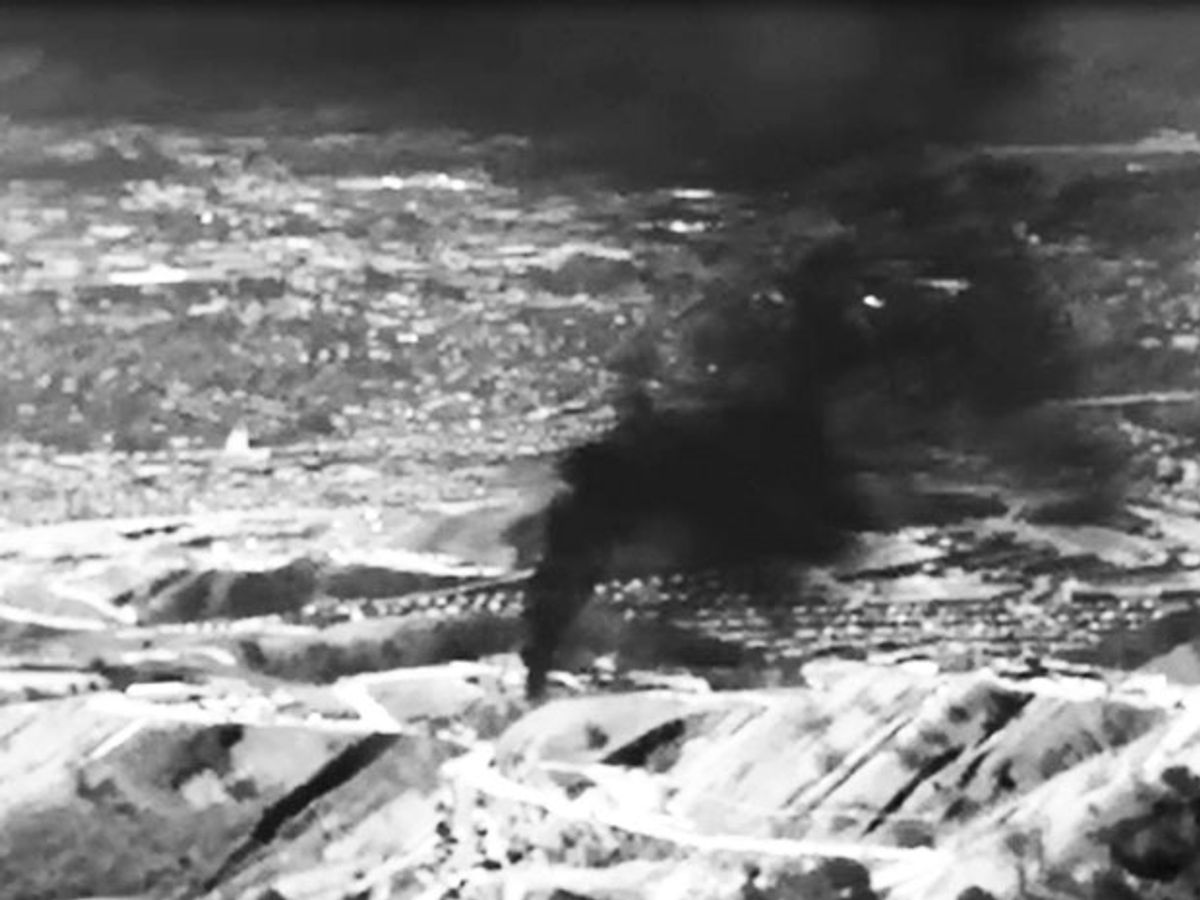A Potent Plume: An infrared camera spotted the greenhouse gas methane pouring from California’s Aliso Canyon storage site last year.Video: Environmental Defense Fund
Grid operators in Southern California are on edge in the aftermath of a massive leak from Aliso Canyon, the region’s largest natural-gas storage facility. With the storage field shuttered until further notice, inadequate supply to gas-fired power plants in the Los Angeles basin could force rolling blackouts this summer, which begins this month. These might affect “millions of utility customers” for up to 14 days, according to a joint report by state agencies and utilities.
Southern California‘s dilemma is indicative of the U.S. power supply’s growing exposure to gas pipeline constraints as gas-fired generation has surged, recently overtaking coal as the country’s top electricity source. Unlike coal, which is stockpiled at power plants, natural gas is a “just-in-time” fuel. Recent efforts to model the combined dynamics of the interconnected but separately operated gas and power systems reveal other vulnerabilities across the country that could lead to power outages. “The provision of reliable service in both gas and power operates on quite a delicate balance,” says Francis O’Sullivan, director of research for the MIT Energy Initiative.
Trouble at Aliso Canyon began in October 2015 when a storage well sprang a leak, spewing nearly 100,000 metric tons of natural gas before the Southern California Gas Co. plugged it in February. Health concerns and the released gas’s odor drove thousands of nearby residents from their homes. And the methane’s potent global warming potential—more than 80 times as much as carbon dioxide’s within a 20-year time frame—set back the state’s climate change goals. Regulators ordered Aliso’s 113 other wells shut off pending inspections, which L.A.-based SoCalGas hopes to complete in August.
Shutting Aliso removed a critical gas supply buffer. During periods of high demand—such as hot summer days when gas-fired generators run full tilt to power air conditioners—SoCalGas’s imports to the L.A. basin via major pipelines fall short. On such days the utility normally releases gas from the Aliso wells to bolster deliveries. Even with Aliso it came up short for two days during a heat wave last summer, forcing a 2,100-megawatt reduction in gas-fired generation in the L.A. basin.
Growing reliance on wind and solar power adds to the challenge. Gas-fired plants ramp up and down to balance the varying supply from renewable power. One risk scenario for this summer is that ramping gas plants could exceed the ability of the gas supply to respond. This possibility comes from a joint technical report released in April by state energy regulators, SoCalGas, L.A.’s municipal power utility, and the California Independent System Operator (which runs the state’s power grid and markets). Quick bursts of power generation could pull pipeline pressure below the system’s minimum thresholds, causing equipment failures such as automatic turbine shutdowns.
Relying on gas plants to balance solar and wind generation could have increasingly severe impacts as their penetration grows, according to gas flow modeling by researchers at Los Alamos National Laboratory, in New Mexico. Their December 2015 report in the journal Applied Energy modeled the Transco pipeline system, which moves gas between the Gulf of Mexico and New York City. In their simulation, ramping up generators to balance wind energy unleashed shock waves that caused rapid “jitter” in gas pressure across the 16,415-kilometer gas network.
The Los Alamos team has since created simulation tools that can coordinate operations of gas and power infrastructure to make optimal use of both systems, says Michael Chertkov, who is affiliated with Los Alamos’s Center for Nonlinear Studies and is also an adjunct professor at Moscow’s Skolkovo Institute of Science and Technology. For example, Chertkov says future simulations could identify optimal use of pipeline compressor stations to dampen dangerous jitter and maximize gas throughput.
For their part, California energy leaders are pursuing a suite of near-term measures to evade blackouts this summer. Several involve more closely aligning the traditionally distinct gas and power markets in a bid to ensure that the gas supply SoCalGas musters translates into as much electricity as possible.
Other strategies include adding more battery storage than originally planned and controlling energy demand. Southern California Edison is expanding the “demand response” capacity, which enables it to remotely reduce some customers’ electricity use when supply is tight. The Rosemead, Calif.–based utility created a $75 rebate to encourage customers to let it turn off their home air conditioners via Internet-connected thermostats. Kevin Wood, SCE’s principal manager for energy programs, says the utility had hoped to recruit 5,000 customers by 2018, but with the incentive, it’s now targeting 10,000 this year and 20,000 more in 2017.
In all, she says SCE could add about 33 MW in demand-response capacity this year. That seems small next to the potential for shortfalls exceeding 4 gigawatts this summer identified by the joint agency report, Wood acknowledges, but she says it could also be decisive: “We could be in a position where we’re 100 MW short, or very close, where this could make the difference. We’ll only know after the summer.”
Environmentalists in California argue that advanced technologies such as demand response and batteries will ultimately eliminate the state’s need for gas-fired power plants. But energy experts such as O’Sullivan at MIT say that the all-renewable energy future they envision is still decades away, and call for upgrades to gas networks: “When you have low output, you’re going to have to rely on that infrastructure.”
This article appears in the June 2016 print issue as “The Troubled Link Between Gas and Electricity Grids.”
Peter Fairley has been tracking energy technologies and their environmental implications globally for over two decades, charting engineering and policy innovations that could slash dependence on fossil fuels and the political forces fighting them. He has been a contributing editor with IEEE Spectrum since 2003.



